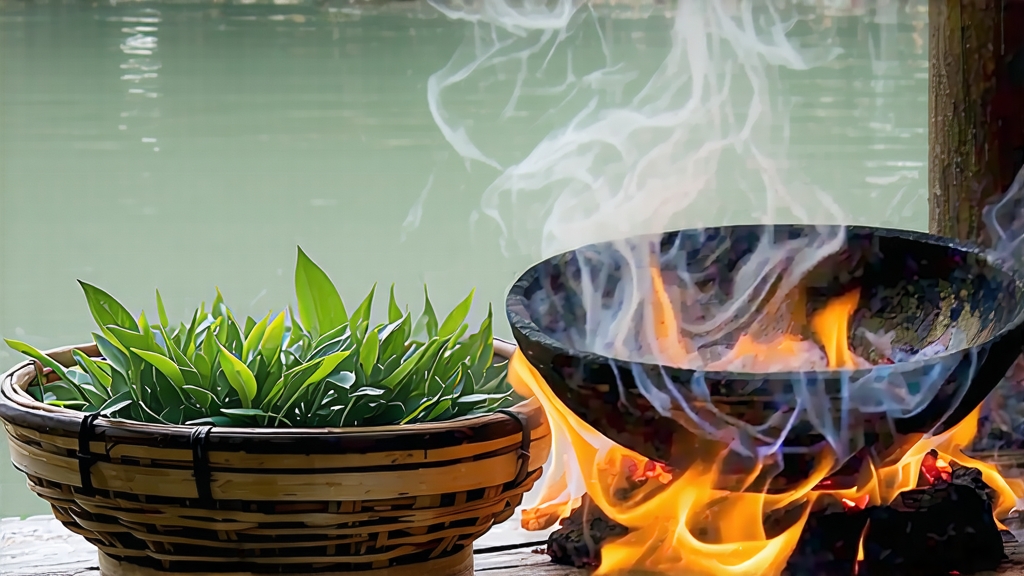
Longjing—often spelled Lung Ching in older texts—is the most celebrated green tea of China, a leaf so iconic that its very name conjures images of mist-clad hills, stone-ringed wells, and emperors in silk robes. Yet beyond romance lies a precise agricultural art that has been refined for well over a millennium in a narrow belt of hills west of Hangzhou’s famous lake. To understand Longjing is to witness how geography, history, and human hand converge to trap the fleeting aroma of early spring inside a tiny, jade-green blade.
Historical roots
The earliest written record dates to the Tang dynasty (618-907), when the area around West Lake was already listed as a tea tribute district. By the late Song (twelfth century), monks at the Yongfu and Jingci temples were planting tea on the terraced slopes above the “Dragon Well” itself, a spring whose dense, mineral-rich water was believed to be blessed by a dragon spirit. The Ming literati turned Longjing into a cultural emblem: painters depicted scholars sipping from porcelain cups beneath gnarled pines, while poets praised its “almond-green color and bean-sweet breath.” Qianlong, the Qing emperor who made six inspection tours of the south, is said to have pocketed a handful of freshly picked leaves during a visit to Hugong Temple; the bushes he supposedly plucked from still survive and are now national heritage trees fenced off near Shifeng Peak.
Terroir and micro-climates
Authentic West Lake Longjing can legally be produced only in 168 square kilometres designated by a 2001 Chinese geographical indication law. Within this zone, five sub-areas are ranked by connoisseurs: Shifeng (Lion Peak), Meijiawu, Wengjiashan, Longjing village itself, and Hupao (Tiger Run). Each offers subtle differences. Shifeng, the highest and most mist-shrouded, yields leaves with higher amino acids, giving a brothy umami nicknamed “seawater sweetness.” Meijiawu’s slightly warmer valley floor produces a nuttier, more forward fragrance. Soil is quartz-sandy, well-drained yet water-retentive, forcing roots to struggle and concentrate flavor. Diurnal swings of 8–10 °C between fog-cooled nights and sunny March afternoons slow chlorophyll build-up, preserving the pale jade hue that distinguishes Longjing from darker green teas of the Yangtze basin.
Cultivars: beyond the generic
Most outsiders assume Longjing is a single plant type; in reality, multiple cultivars are grafted and selected for each micro-zone. The traditional “Old Tree” qunti zhong (群体种) is a seed-propagated landrace with small, thick leaves that tolerate high heat during pan-firing. It delivers the classic orchid-bean aroma but yields only one brief spring flush. Modern clonal selections such as Longjing #43, released in 1987, sprout seven to ten days earlier, carry more chlorophyll, and tolerate closer planting, yet they can taste grassy if over-fired. A third cultivar, Zhongcha 108, trades some fragrance for frost resistance and is planted on higher, north-facing slopes. Purists insist on blends dominated by Old Tree material for depth, while commercial gardens favor #43 for consistency and volume.
The picking calendar
Quality is decided in the field before any wok is heated. Leaves must be picked when the overnight dew has lifted but before the sun grows harsh, usually between 6 a.m. and 10 a.m. The standard is “one bud with one unfolding leaf,” about 2.5 cm in length, weighing 0.3 g per pluck. A skilled picker gathers only 500 g of fresh leaf in four hours; 50,000 such plucks are required to make one kilogram of finished tea. The earliest batches, picked before the Qingming festival (around April 5), command prices exceeding 10,000 yuan per kilo because the buds are rich in L-theanine yet low in bitter catechins. After Guyu (April 20), rising temperatures accelerate growth, thinning flavor and dropping the market price by half every ten days.
Pan-firing: ten minutes that decide a year
Within two hours of picking, the leaves are spread 3 cm thick on bamboo trays to wither for 4–6 hours, losing about 30 % moisture and developing a faint grassy note. They are then hand-fried in